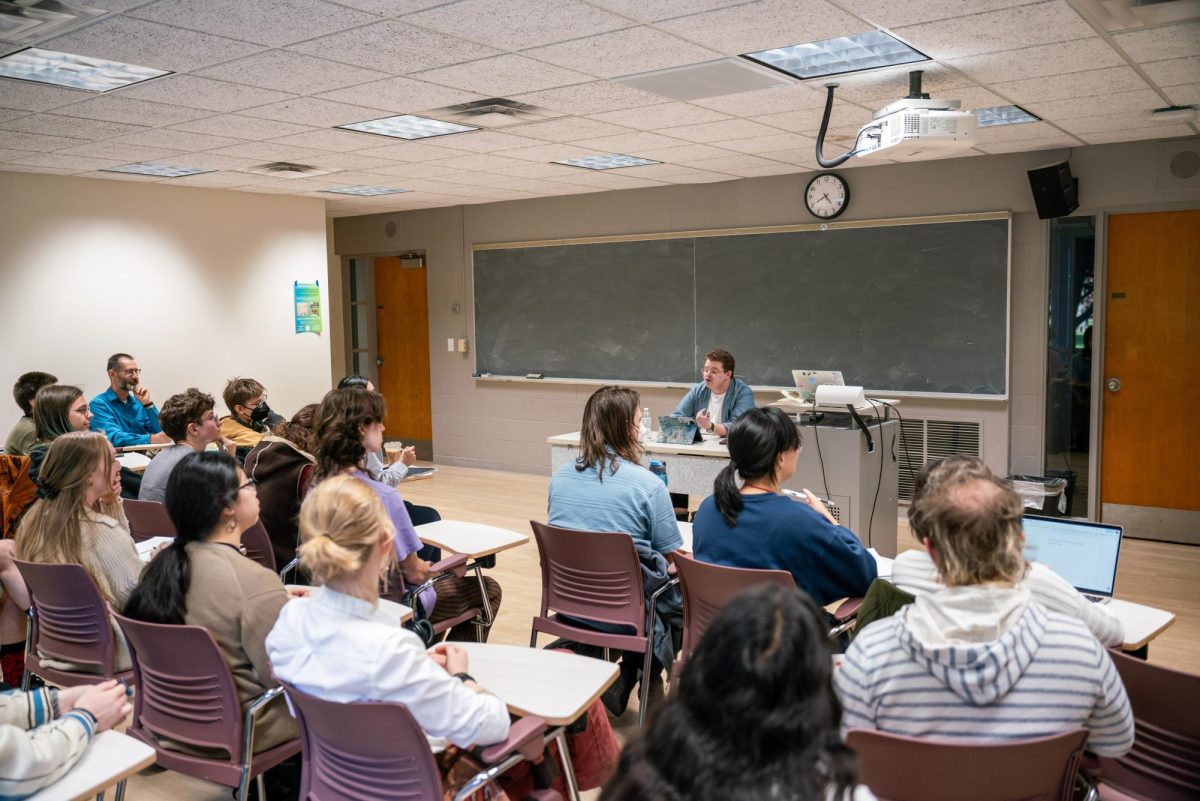Sunday Object Talk: Tilmann Riemenschneider’s “Bust of St. Urban”
April 27, 2012
An appropriate follow-up to College junior Sarah Riecke’s discussion of Baldassare Peruzzi’s painting “The Mystic Marriage of St. Catherine” on April 15, College senior Alison Eby delivered a short talk last Sunday on Tilmann Riemenschneider’s “Bust of St. Urban,” created circa 1500. When examined in tandem, these two fascinating works provide a cross section of artistic practice and religious thought in the early 16th century.
“The Mystic Marriage of St. Catherine” (1502–3) depicts Saint Catherine’s mystical vision of receiving a wedding band from the Christ Child, and has scenes from her life painted in the background. St. Catherine was said to be an early Christian martyr, though the details of her life and even her very existence have been called into question as no physical evidence and minimal literary evidence of her life exist. Many scholars believe that her narrative was a composite of Classical texts and other stories amalgamated to craft the prototypical account of a female martyr.
Tilmann Riemenschneider’s portrait “Bust of St. Urban,” who reigned as Pope Urban I from 222 to 230, also presents an archetypal representation of a religious figure meant to promulgate a particular, mythologized image. St. Urban is shown here in his requisite papal garments, wearing a robe, a three-crowned papal tiara, and carrying a book. As St. Urban’s feast day occurs during an important time in the grape harvest, he was considered to be the patron saint of vineyards, and he can be recognized by the presence of grapes, a bushel of which can be seen carved atop his book.
This bust is unique in that it is carved in the round. Busts of this size and material are often carved in a detailed, naturalistic manner in the front but are flat on the opposite side, as they ordinarily sat in niches or against walls. The fact that his bust is finished on all sides indicates that it was meant to be viewed in the round, likely carried as part of a procession or ceremony.
Riemenschneider’s bust in the Allen Memorial Art Museum’s collection is unique for a variety of other reasons as well. In the 15th and 16th centuries wooden sculptures were often painted in order to achieve what artists of the time thought was a more naturalistic look. The “Bust of St. Urban” shows no signs of past polychromy, making it a distinctive object as compared to contemporaneous works. The bust is carved from linden wood, which is naturally light–colored, but was stained with a darker finish in the 19th century in accordance with the vernacular preference for oak sculptures. Unlike most wooden sculptures of the time, the piece is solid, not hollow. Oberlin’s “Bust of St. Urban” is also rare in that it was carved entirely by Tilmann Riemenschneider’s hand.
Riemenschneider was an influential figure in German art and politics in the 16th century. He was the leader of his guild and even went on to become the mayor of a southern German town. Since an artist of Riemenschneider’s stature would have had a studio and many assistants working under him to assist with his projects, it is unusual to find a piece that was crafted exclusively by the master himself. As this was a bust of a saint to be used for liturgical purposes it was likely an important commission, prompting Riemenschneider to carve the sculpture himself, as opposed to passing the project to an assistant.
Here, St. Urban is portrayed in a moment of pensive reflection, with downcast eyes and a somber countenance. Eby explained that this solemn appearance was meant to convey a deep spiritual engagement. Eby’s talk was well attended, with nearly 20 museum-goers in the audience. Many of the attendees were prospective students and their parents enraptured by the quality and quantity of the AMAM’s collection. Eby demonstrated the opportunities for student involvement at the AMAM and how fortunate Oberlin students are to have this wonderful collection as a resource.


















